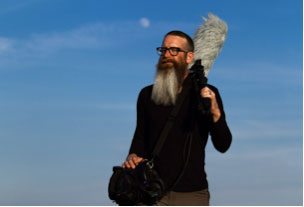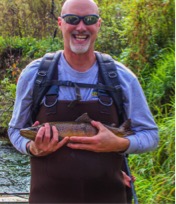Ames, Iowa – The Iowa Water Center (IWC) annually administers a statewide grant competition known as the IWC Graduate Student Supplemental Research Competition.
The purpose of this funding is to help graduate students to complete additional research objectives beyond the scope of their current work, with an emphasis on submitting their research to peer-reviewed publications.
Tyler Butts is one of the recipients, along with three other graduate students across Iowa. Each recipient will receive funding for various different research studies.
Butts’ research focuses on the relationship between food web structure and ecosystem resilience, as well as how food web structure affects greenhouse gas flux.
In order to gain a further understanding of this relationship, Butts and his research team proposed an experiment that will test the effects that three different food web structures have on ecosystems using six experimental ponds. Each food web structure will have varying amounts of complexity and will be replicated in two separate ponds.
The goal of this experiment is to not only gain a newfound understanding, but to then share this knowledge in order to implement more prosperous lake restoration programs.
Get to know Tyler Butts, a PhD student at Iowa State University.
Butts was raised in a small town in south central Wisconsin. Butts grew up around lakes, as well as being an avid fan of Steve Irwin and the Discovery Channel, which he believes had an impact on his career path.
Butts attended St. Norbert College in Wisconsin to obtain his undergraduate degree. While studying there, he worked with Dr. Carrie Kissman to investigate how zooplankton were being affected by river dredging in Green Bay, Wisconsin. This inspired Butts to dig deeper into how disturbances may affect bodies of water, but he wanted to explore the entire food web instead of just zooplankton. He was directed to Dr. Grace Wilkinson, a limnologist, ecosystem ecologist and assistant professor at Iowa State University, who is also interested in food webs at an ecosystem level.
In the summer of 2019, Butts and his fellow research team members conducted an experiment in the Horticulture Research Station at Iowa State that tested how the density of bigmouth buffalo affected the ecosystem resilience of these experimental ponds. In this research, the team found that a higher density of bigmouth buffalo led to algae blooming quicker and at a more intense rate compared to the ponds that contained a low density or no bigmouth buffalo. This experiment led the group to inquire further and apply for the IWC Graduate Student Research Competition.
“The Iowa Water Center program’s focus on research and emphasis on exploring the challenges to water sustainability made it the perfect home for our proposal,” said Butts.
Butts’ shared that his favorite part of the research process is to delve into the background information that we already have access to and find the areas of that research that need more clarification. He also explained that helping others through the scientific process has been very fulfilling.
“Guiding undergraduates through the scientific process from asking a question, to running an experiment, and writing up a report or presenting a poster is extremely rewarding,” Butts shared.
When Butts isn’t practicing research experiments, he enjoys to spend most of his time doing various outdoor activities. One of his favorite pastimes is to hike around lakes or rivers because of the opportunity he gets to reconnect with the ecosystems that he spends his time working with. Butts also enjoys camping, reading, playing strategy games and playing jazz. He shared that he hasn’t had much of a chance to find time to play since moving to Ames, but still loves to play when he gets the opportunity.

